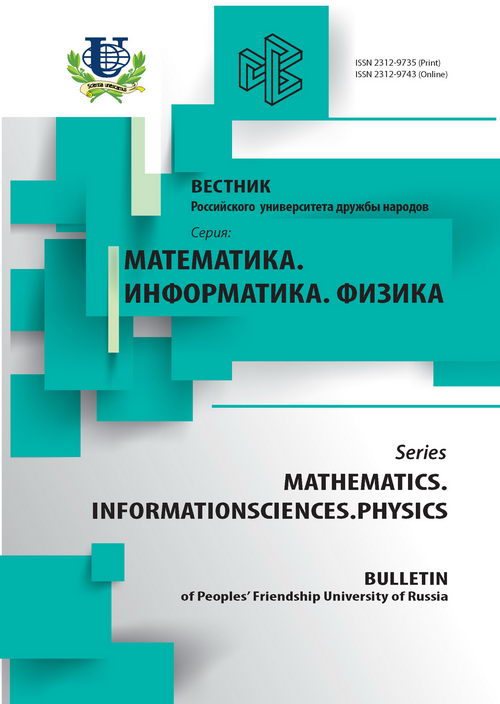Dynamic Control of Constrained Systems and Inverse Problems of Dynamics
- Authors: Mukharlyamov RG1, Gorschkov EA1
-
Affiliations:
- Peoples’ Friendship University of Russia
- Issue: No 1 (2015)
- Pages: 73-82
- Section: Articles
- URL: https://journals.rudn.ru/miph/article/view/8570
Cite item
Full Text
Abstract
The control problem of dynamic system, containing different physical elements, is solved. Using known dynamic analogies, processes in difficult system are described by the differential-algebraic equations of the classical mechanics. The corresponding differential-algebraic equations include the dynamic equations, the constraints equations and the formulation of purpose of control. Dynamics of system is described by Lagrange equations or by equations in the canonical variables, containing indeterminate multipliers in the right hand sides. The problem of definition of Lagrange multipliers or control functions corresponding to the constraints equations, is reduced to construction of the differential equations systems having partial integrals. Definition of solutions stability of the dynamics equations in relation to the constraints equations is given. The dynamic indicators considering deviations from the constraints equations are entered for ensuring asymptotic stability and constraints stabilization at the numerical solution of the differential equations. The expanded system of dynamics equations, consisting of the initial system dynamics equations and the constraints perturbations equations is under construction. The constraints perturbations equations, constructed on the modified dynamic indicators, allow to define stability conditions and constraints stabilization. Conditions of constraints stabilization, corresponding to the numerical solution of the dynamics equations are given by Euler method and Runge-Kutta method. The solution of a problem of stabilization of vertical position of the rod fixed by cylindrical joint on the cart, making rectilinear movement, is proposed. The control is performed by force acting on the cart and moment applied to the rod.
Keywords
About the authors
R G Mukharlyamov
Peoples’ Friendship University of Russia
Email: robgar@mail.ru
Department of Theoretical physics and Mechanics
E A Gorschkov
Peoples’ Friendship University of Russia
Email: 90675@bk.ru
Department of Theoretical physics and Mechanics
References
















